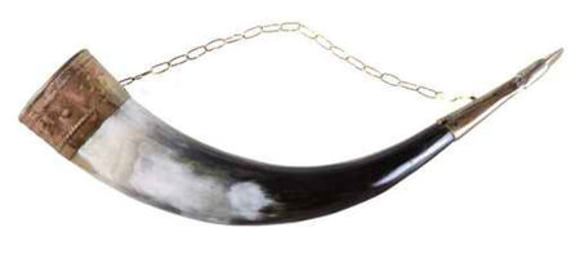2. A Breath of Fresh Air, Rooted in History
Historically speaking, both these horns are fairly recent additions to the family of brass wind instruments. Their development, however, goes back a while, parallel to that of the flugelhorn at the beginning of the nineteenth century. We find the origin of the instrument at the origin of its name.
Both instruments, the tenor and the baritone, developed from the bugle, and are thus members of the brass wind instrument family. The bugle, a signal or alarm horn, is the original instrument, and it shares the horn's coiled shape. Uncoiled, a tenor horn would measure 2.66 metres in length, which would be impressive but not all that practical.

The flugelhorn, the alto and baritone horns, and even the tuba are all members of the same horn family. They all share a conical bore and a modest widening at the bell. In prehistoric times, signal horns were often made of animal horns, tusks, or wood. It is important to note that signal horns are not musical instruments as such, since they were usually used in hunting and at war. Only in around 1,000 CE did people in England add holes to the horn to increase its musicality. Looking at today's valved instruments, we see the circular coiled form that originated in Europe in the 12th century. A jump across some centuries takes us to the 17th century, to 1680, when the development had progressed to the point where the horn was given a funnel-shaped mouthpiece rather than the semi-spherical one it had previously had. This would change later on, but it was mainly the invention of the piston valve by Heinrich Stölzl and Friedrich Blühmel in 1814 and that of the rotary valve in 1818 that really shook things up. For example, Adolphe Sax developed an entire family of of instruments with these valves between 1843 and 1855. The tenor horn and the Euphonium were among them. As with the saxophone, he gave them his name and called them saxhorns. The tenor and baritone horns we know today developed from these instruments. Their invention made it possible to close the gap in pitch between the deep brass instruments and the lowest e-flat trumpets in the alto range
Neither tenor nor baritone horn have found a place in symphony orchestras proper, but they are indispensable in symphonic brass bands and other brass ensembles. As early as 1847, the tenor horn was included in military orchestras.
Kontakt
Nejlepší produkty
Nabídky
-
Hubičky pro barytony/tenory
-
Kufry a obaly pro barytony
-
Tenory
-
Obaly a kufry pro tenory
-
Barytony






